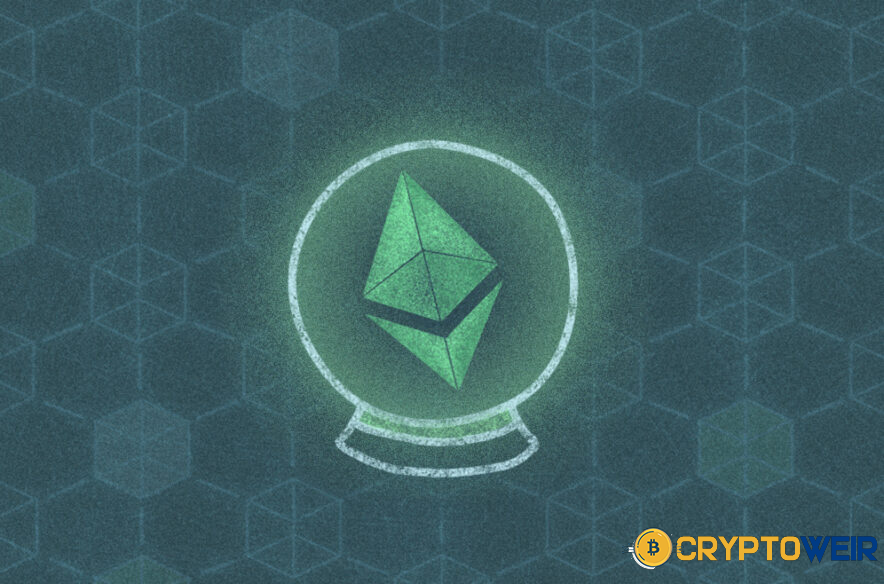What is Blockchain?

Simply explained, blockchain is a decentralised network of computers that stores and manages data. This trustless technology has the potential to fundamentally alter the way we handle data and transmit value. As an…
Over the past few years, blockchain has emerged as one of the technologies that is most frequently discussed. Although it has numerous other applications, it is most well-known as the technology that powers Bitcoin. Myths and misconceptions are frequently followed by it. We will provide a thorough explanation of all you wanted to know about blockchain in this guide.
Blockchain: What is it?
A blockchain is a particular kind of database, or a collection of data, that is kept in so-called blocks and linked together via intricate cryptographic protocols. The data stored on the blockchain is virtually unhackable as a result of these. This is due to the fact that any changes to one block instantaneously contaminate the data in all other blocks, making it clear that something has been changed. Blockchains become tamper-evident as a result. Data that has already been recorded can be updated, but not modified back in time. This implies that every piece of information may be tracked using a timestamp, double-checked at any moment, and used as a kind of digital fingerprint.
Other characteristics of blockchain distinguish it from other, more conventional databases. These are frequently regarded as the three foundations of blockchain.
The Pillars of Blockchain
Blockchain has three main characteristics:
- Immutability
- Decentralization
- Transparency
These are the fundamentals of the blockchain technology itself, as well as the assurances that blockchain-based cryptocurrencies are secure. It is safe to argue that without grasping these principles, one cannot properly understand blockchain technology. Let’s examine each of them individually.
1. Immutability
Something cannot be changed once it has been made if it is immutable. A block that is added to the blockchain has the property that, once it is there, it cannot be changed any longer.
Hashing is a technique used on the blockchain to achieve immutability. When certain data is hashed, a specific result known as a checksum is produced. The same outcome will be obtained each time the same data is hashed using the same method; this serves as a digital signature. The primary benefit of hashing is that it cannot be reverse-engineered, meaning that you cannot take a hash and decipher the data that went into creating it.
In a blockchain, the information from the block that is presently being used and the
In other words, this ensures data integrity. Information that is kept on the blockchain can always be referred to because you know it hasn’t changed since you last checked. Of course, information can be modified, but this is added to a new block. This ensures that you can accurately trace its history and prevents fraud. Additionally, it can be used as evidence of fraud because it can show who did what and when and act as a reliable source of information. Of course, just because something appears on the blockchain doesn’t guarantee that it is accurate, but in this instance, a mistaken party cannot hide their tracks.
However, if they so want, can the blockchain owner hide their tracks? Well, no.
2. Decentralization
Decentralization is the distribution of power and responsibility among all participants from a single, central authority. This implies that no one may rule over another person in a blockchain. Everyone who participates is on an even playing field.
Of course, doing this in practise is not so simple. There are significant factors to take into account, such as people’s capacity to develop many identities to improve their decision-making skills. This is actually a Sybil attack, a common manipulation technique. The amount of power you have in a blockchain network depends on other factors, which helps you avoid such possibilities and allows people to keep some of their privacy. These differ per consensus algorithm: in Bitcoin, it depends on your computational capacity, but
There are several benefits to decentralization:
- Peer-to-peer communication: there are no intermediaries in a decentralized system. If you want to send someone money through the Bitcoin network, you do so directly, instead of through a third party like in the case of banks and other centralized financial services.
- Security: since the data isn’t stored in a single spot but is instead shared among all participants, you can’t really hack a blockchain.
- Data reconciliation: with all the data in one place and distributed among participants, any incorrect data (either through an honest mistake or as a malicious attempt) can be quickly recognized and corrected.
- Efficiency: if one node, or participant, has to update their system, or their power has gone out, the network can still go on as usual. This is because it does not depend on one person or even a group of people.
- Trustlessness: thanks to all the previous factors, as well as blockchain’s immutability, you don’t have to know anyone else in the network to know it will function well.
3. Transparency
The fact that everything is saved on the blockchain in its current state and cannot be altered does not imply that all of that material is hidden from public view. Due to the fact that anyone can view every transaction and all associated information using so-called block explorers, transparency is the third pillar of the technology.
Read More:What is Ethereum?
This does not imply that the person or organisation in charge of this information can be quickly identified, though. When using Bitcoin, for instance, you are not required to give anyone your personal information (cryptocurrency exchanges are a different beast). You are given a wallet with a unique address, and when you transfer money to and from that wallet, the block contains information about that address.
“Hard to trace” does not, however, imply impossibility. Many blockchain-based businesses, including as exchanges, make their wallet addresses available to the public so you may view their transactions. This is significant because it adds a degree of accountability that was virtually unheard of prior to blockchain.
Additionally, this is true for people. If you registered at an exchange after going through the Know-Your-Customer (KYC) procedure, your wallet address there will be linked to your name and other details. The blockchain itself will still not be able to display this data. However, it could still be obtained from the exchange through hacking and other security flaws, regulatory processes (for instance, if you’re accused of doing anything bad), or both.
How Do Blockchains Function?
It is easier to understand how the technology functions if you comprehend the foundations of blockchain. Its status as a decentralised, transparent, and unchangeable database has already been established. Since everyone has access to it, it is disseminated. As a result, when you wish to change something, such send some Bitcoin to a friend, the following occurs:
- You create a transaction. You add all the relevant information like who receives the BTC and how much.
- You pay the network fee. This is part of the miners’ reward for including your transaction in the next block.
- Your transaction is added to a block. This block is created by the participant who won the right to do so, depending on the consensus algorithm (miners, validators, etc.). The bigger your network fee, the more likely you are to be included before others, so your transaction might go through faster.
- The block is added to the blockchain. It goes through the aforementioned hashing process first. Once the block is added, you can’t change it anymore (which also means you can’t reverse your transaction unless the recipient decides to send you your funds back).
Another element called a consensus algorithm affects how a block is added to the blockchain. They are used to choose who gets to contribute the following block (and receive the rewards). Two of the most popular consensus algorithms among the many available are:
- Proof of Work (PoW): used by Bitcoin, it involves solving a puzzle (also known as “mining”), and the first participant or miner to solve the puzzle and let everyone else know is the one who adds the block and receives the reward.
- Proof of Stake (PoS): used by the upcoming version of Ethereum, the participants who get to make decisions are known as validators and chosen by the number of coins they hold. Validators must stake a portion of the coins they own to be chosen to add a block and receive the reward, and if they try to act maliciously, they forfeit their stake.
A node is another name for a network participant. Nodes can be classified into three groups:
- Light Clients keep only a shallow copy of the blockchain, which includes only the basic information that they might need, as the blockchain itself tends to get very big;
- Full Nodes are those that keep a full copy of the blockchain and thus have access to all the information stored on it, regardless of size; and
- Miners or Validators are nodes that can get the right to verify transactions, depending on the network’s consensus mechanism.
Inventor of the Blockchain
But from whence did blockchain originate?
The first blockchain, created by a person or group of persons using Satoshi Nakamoto’s name, went live in 2009 as the technology that powers Bitcoin. But Stuart Haber and W. Scott Stornetta, two scholars, presented it for the first time almost two decades earlier, in 1991. Other technological advancements over the course of the following 18 years, such as Stefan Konst’s 2000 notion of cryptographically protected chains, allowed for the first practical application of blockchain.
Since 2014, when blockchain is thought to have split from Bitcoin, the technology has occasionally been referred to as blockchain 2.0. This indicates that from that point forward, it is utilised for uses other than Bitcoin, initially with other cryptocurrencies and eventually with fiat currencies.
Public vs Private Blockchains
The characteristics we discussed in this book are entirely unique to so-called public blockchains. These blockchains are also permissionless, which means that anyone can join whatever network they choose without worrying about being blocked because no one has the power to prevent it.
However, some businesses had to exploit the technology for their own needs as blockchain 2.0 gained popularity. Most of the time, there is no justification for making the company’s blockchain data accessible to the general public. So-called private blockchains originate from here.
Read More:How Can I Purchase Ethereum With Cash?
Private blockchains are not accessible to everyone, as their name suggests. Usually, only the corporation and its partners are allowed to use them. For instance, in the supply chain sector, only those with a connection to the tracked goods are allowed.
Permission is a feature of the majority of private blockchains. In other words, a designated authority (often the company’s CEO) can determine who can make modifications to the blockchain and who can only view the data that has already been recorded. These blockchains are frequently not decentralised simply because they are not required to be.
Investment Strategies for Blockchain Technology
There are two main ways to invest in blockchain technology:
- Through cryptocurrencies: buying cryptocurrencies means participating in the blockchain. When the blockchain network introduces a new concept, improvement, or other significant change, its coin price often follows. Not only can you generate an income this way, but owning decent amounts of certain cryptocurrencies also gives you voting rights in the blockchain. This is not dissimilar to owning stocks.
- Through stocks: speaking of which, you can also invest in stocks of established companies that have blockchain solutions as part of their offer. These are often lower-risk options. You can also invest in blockchain startups that have gone public.
Participating in crowdfunding initiatives (ICOs and IEOs), blockchain penny stocks, and venture capital are further methods to invest in blockchain. Your decision will be influenced by your willingness to take on risk and the amount of money you have available.
Use of Blockchain
The procedure is rather simple when it comes to using blockchain for cryptocurrency. Obtaining the recipient’s address, entering it into your wallet’s Send option, choosing the network charge you want to pay, and waiting for confirmation are all that are required. Even simpler is receiving money because you don’t need to do anything.
You will want access to the blockchain’s block explorer in order to use blockchain to trace information stored on it. Blockstream.info is the most popular block explorer for Bitcoin, whereas Etherscan.io is the most popular one for Ethereum. The latter serves as a central hub for all things Ethereum and is utilised for all coins created on the Ethereum network.
Depending on the type of blockchain, using it to participate in decision-making is possible. You will need to have your own mining equipment and be prepared to pay hefty electricity expenses for PoW-based blockchains. In PoS networks, you must have a sizable holding of the native token of the network and be prepared to stake at least some of it. Check the network’s documentation for more detailed information because it usually explains all you need to know in great detail.
Blockchain Applications
Nowadays, blockchain is utilised by numerous businesses. The major feature they have in common is that they all gain from the immutability and transparency of blockchain. Here are some ways that blockchain enhances particular industries’ businesses:
- Supply chain: suffering from long and heavy paper trails, the supply chain industry benefits from blockchain in that it removes the need for all participants to have their own copies of everything. With a single, immutable source of information, data reconciliation becomes much faster and removes the need for any unnecessary third parties.
- Insurance: another case in which data reconciliation is important, blockchain allows all participants to see what was done by whom. This prevents insurance fraud and speeds up all processes.
- Banking: blockchain allows for faster and more efficient cross-border payments but also adds a new layer of transparency and accountability to traditional finance. This is why many banks are looking into their own central bank digital currencies (CBDCs).
- Healthcare: the coronavirus pandemic has proven a need for accessible healthcare information. Using blockchain, users can decide who to share their information with, which includes vaccination status, whether or not they’ve had Covid, and if they are at risk—all information that can help them lead a more normal life, like go to concerts and events, if they’re healthy.
- Pharmacy: pharmaceuticals are often counterfeit and/or sold on black markets, which can be extremely dangerous. Being able to track an item from its production to the time it reaches the end-user can help prevent that, along with checking whether it is expired.
- Government: voter fraud is a globally widespread issue that blockchain can help combat. This is why many countries are looking into implementing a blockchain-based voter system that cannot be manipulated in favor of any party to facilitate a truly democratic process.
- Art: perhaps the best-known example are NFTs. To own an NFT is to be able to prove you own an original digital item—something like the difference between owning an original painting and only having a print of it.
- Gaming: similar to art, NFTs take ownership to a completely new level, so collecting games are thriving thanks to the technology.
This is not a complete list of potential advantages, but it serves as an excellent place to start when figuring out what blockchain is good at.
Blockchain Myths You Should Know
Some persistent myths about blockchain are present because of ignorance. Here, we’ll examine them and clarify the reality.
- Bitcoin = blockchain. One of the most common myths assumes that Bitcoin and blockchain are one of the same. As we’ve already covered, the two originated together, but blockchain has since found many other use cases.
- Blockchain uses a lot of electricity. This is only true of PoW consensus algorithms; blockchains that use other consensus mechanisms do not spend more electricity than many other technologies.
- Blockchain is slow. While Bitcoin transactions are much slower than other fiat payment processors, this is due to its set block time. Many other blockchains are much faster, even able to process thousands of transactions per second.
- Blockchain isn’t mature enough for the mainstream. Many enterprises are already using blockchain—Forbes has an annual Blockchain 50 list, where businesses with a revenue of more than USD 1 billion per year are shown.
- All my transactions are publicly visible! While this is true, this does not mean it can be easily traced back to you if you take some basic privacy measures.
Conclusion
Blockchain need not be difficult to understand, despite having numerous highly sophisticated aspects. The technology’s greatest asset is its complexity, which ensures security, transparency, and accessibility without compromising democracy and equality.






4 Comments